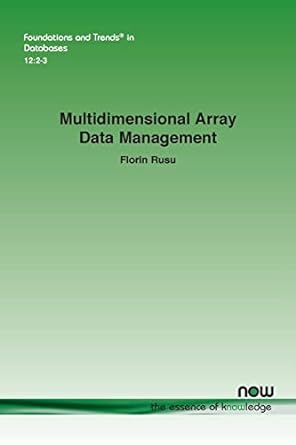Answered step by step
Verified Expert Solution
Question
1 Approved Answer
Levels of Cohesion Cohesion in software engineering refers to the degree to which elements within a module belong together. It reflects how closely the elements
Levels of Cohesion
Cohesion in software engineering refers to the degree to which elements within a module belong together. It reflects how closely the elements work together to achieve a single purpose or responsibility. The different levels of cohesion, from the weakest to the strongest, are crucial in determining the design quality and maintainability of software systems.
Coincidental Cohesion: At the lowest level, coincidental cohesion occurs when elements within a module are grouped arbitrarily without any logical relationship. This type of cohesion results from haphazard code additions over time and does not contribute to the module's clarity or functionality.
Logical Cohesion: Modules with logical cohesion group elements together because they logically belong to the same category or are related in some way. However, they do not perform the same task or contribute to a single responsibility within the module.
Temporal Cohesion: This type of cohesion groups elements that are executed at the same time or during the same phase of execution. They are related by when they are executed rather than by the functionality they perform.
Procedural Cohesion: Modules with procedural cohesion organize elements in a sequence where each element follows the next in a predefined order. They are related by the sequence of steps they perform rather than by a unified task.
Communicational Cohesion: Elements in modules with communicational cohesion operate on the same data or share the same inputoutput They contribute to a single task or manipulate the same data entity within the module.
Sequential Cohesion: This level of cohesion involves elements that are arranged in a strict sequence where the output of one element becomes the input of the next. Each element depends directly on the preceding element, forming a clear sequence of operations.
Functional Cohesion: The highest level of cohesion, functional cohesion, occurs when all elements within a module contribute to a single, welldefined task or objective. This type of cohesion results in modules that are highly focused and perform exactly one function or operation.
Levels of Coupling
Coupling in software engineering describes the degree of interconnectedness between modules or components. It indicates how much one module relies on another module's internal details or how closely they interact. Lower coupling is generally preferred as it promotes modularity, reusability, and easier maintenance.
Content Coupling: This is the strongest form of coupling, where one module directly accesses or modifies another module's internal data or variables. It creates a tight dependency between modules, making them highly interdependent and difficult to change independently.
Common Coupling: Modules with common coupling share global data or variables. Changes to this shared data affect all modules that access it leading to potential unintended consequences and difficulties in tracking changes.
Control Coupling: Control coupling occurs when one module controls the behavior of another module by passing control information, such as flags or parameters. This type of coupling can introduce dependencies based on the flow of control between modules.
Stamp Coupling DataStructured Coupling: In stamp coupling, modules share a complex data structure but only use part of it While it reduces direct dependency on module internals compared to content or common coupling, it still ties modules together through shared data structures.
Data Coupling: The most desirable form of coupling, data coupling, occurs when modules communicate by passing simple data parameters. Each module only shares the necessary data with others, minimizing dependencies and promoting modular design.
In conclusion, understanding and applying cohesion and coupling principles are essential for designing modular, maintainable, and scalable software systems. High cohesion ensures that modules are focused and perform welldefined tasks, while low coupling reduces dependencies between modules, making them easier to modify and reuse. By striving for functional cohesion and data coupling, software engineers can enhance software quality and facilitate smoother development and maintenance processes. paraphrase
Step by Step Solution
There are 3 Steps involved in it
Step: 1

Get Instant Access to Expert-Tailored Solutions
See step-by-step solutions with expert insights and AI powered tools for academic success
Step: 2

Step: 3

Ace Your Homework with AI
Get the answers you need in no time with our AI-driven, step-by-step assistance
Get Started


